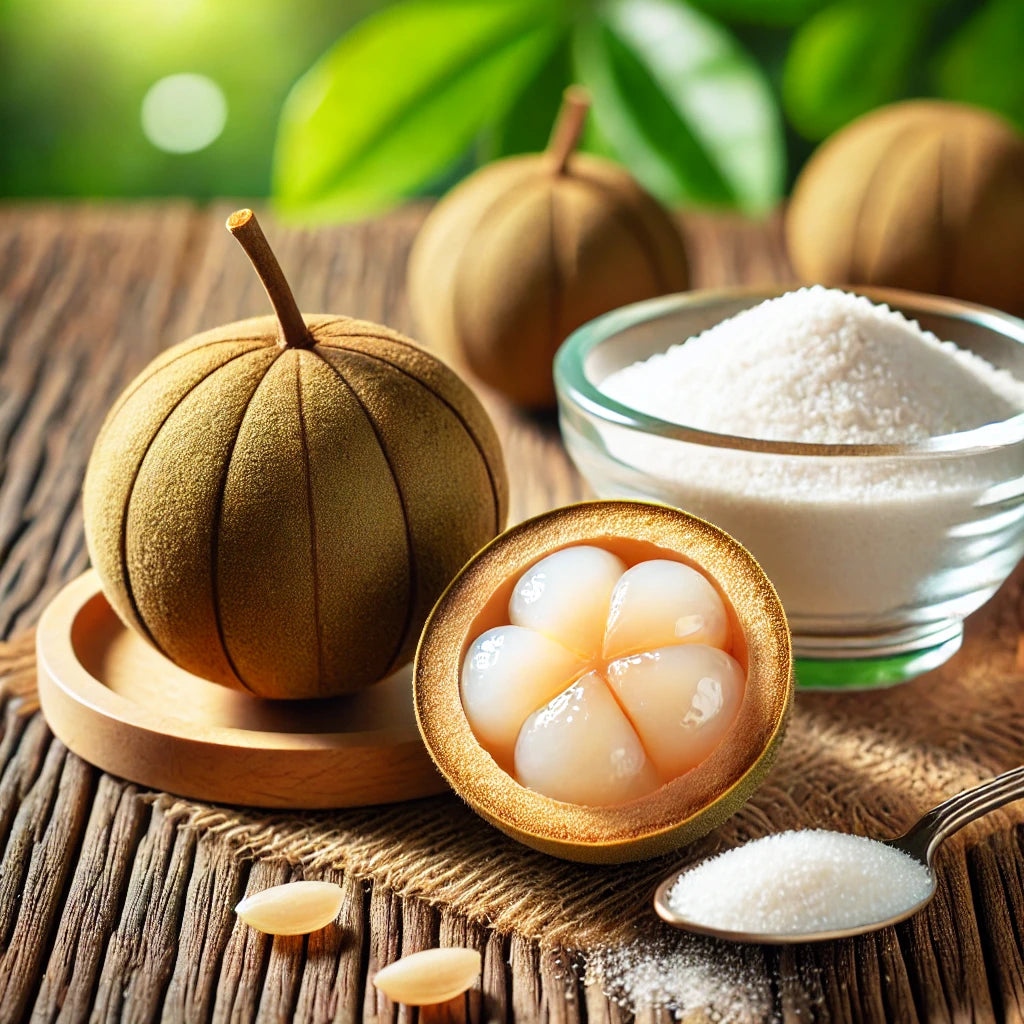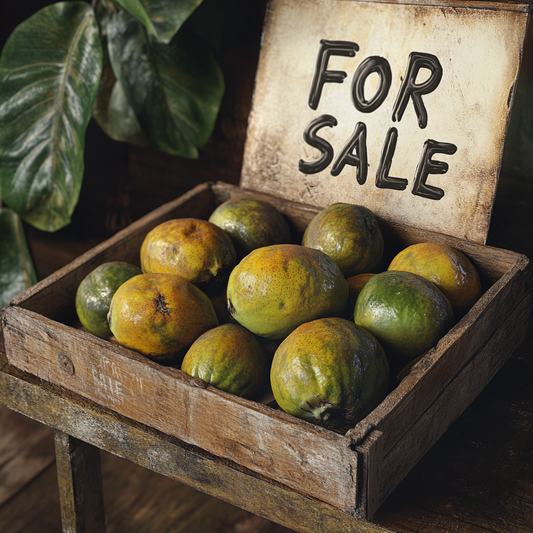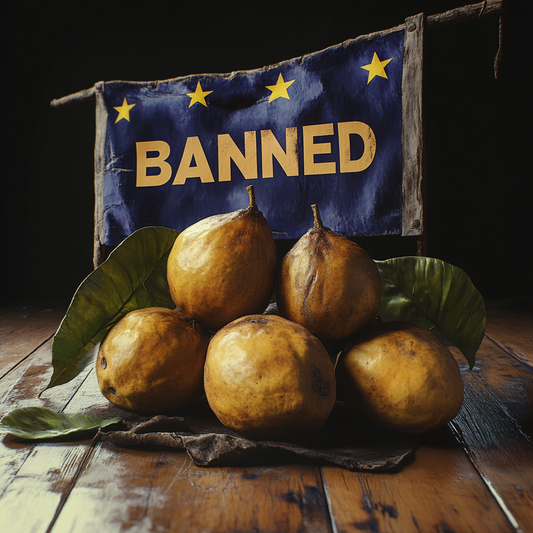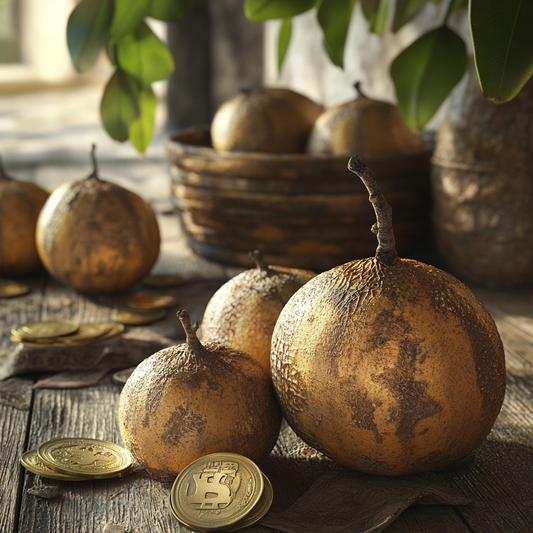Let’s get real about monk fruit.
Everyone's after that sweet life without the sugar crash.
With the rise of low-carb, keto, and anti-inflammatory diets, monk fruit has taken the spotlight as the go-to alternative to sugar—without all the carbs and calories.
Whether you’re new to this natural sweetener or just looking to see if it’s worth the swap, here's everything you need to know about monk fruit.
What Is Monk Fruit?
Monk fruit, also known as luo han guo, comes from Southeast Asia, specifically the mountains of southern China and northern Thailand. It’s a small green melon that looks like a cross between a tiny watermelon and a cantaloupe.
For centuries, monk fruit has been used in traditional Chinese medicine. The real magic, though, comes from compounds called mogrosides inside the fruit. Mogrosides give monk fruit its intense sweetness, estimated to be about 150-250 times sweeter than table sugar—all with zero calories and no sugar spikes.
How Is Monk Fruit Used as a Sweetener?
Unlike traditional sweeteners, monk fruit is processed to isolate mogrosides, which provide the sweetness without any sugar. Here's what this process looks like:
- Harvesting the Fruit: The monk fruit is collected at peak ripeness.
- Extracting Mogrosides: The fruit is dried, and the mogrosides are extracted to create a concentrated, calorie-free sweetener.
- Mixing with Other Ingredients: Often, monk fruit extract is blended with erythritol or other natural fillers to balance out the sweetness, so it doesn’t overpower.
You can find monk fruit sweeteners in powder, granule, or liquid form, making it versatile for both baking and beverages.
Why Is Monk Fruit Popular? The Key Benefits
1. It’s a Zero-Calorie Sweetener
Monk fruit provides sweetness without any calories or carbs, making it perfect for low-carb or ketogenic diets.
2. Won’t Spike Blood Sugar
Unlike sugar, monk fruit doesn’t cause a blood sugar spike. This makes it a popular choice among diabetics and those managing their blood sugar levels.
3. Anti-Inflammatory Properties
Studies show that monk fruit’s mogrosides have natural antioxidant and anti-inflammatory benefits, meaning they could help reduce oxidative stress and inflammation in the body. That’s good news for anyone looking to support their immune system and overall wellness.
4. No Known Harmful Side Effects
Unlike artificial sweeteners, monk fruit extract has very few (if any) known negative side effects when used in moderation.
5. Can Help with Weight Management
Replacing sugar with monk fruit sweetener can help cut down on empty calories, making it easier to manage weight while still enjoying sweet treats.
Monk Fruit vs. Other Sweeteners: How Does It Compare?
When it comes to choosing a sweetener, options like stevia, aspartame, and sucralose come up. Let’s see how monk fruit stacks up:
| Sweetener | Calories | Glycemic Index | Aftertaste? | Processing | Pros |
|---|---|---|---|---|---|
| Monk Fruit | 0 | 0 | Minimal | Natural | Zero-calorie, no blood sugar spike |
| Stevia | 0 | 0 | Slight | Natural | Zero-calorie, common in drinks |
| Erythritol | 0 | 0 | None | Sugar Alcohol | No aftertaste, safe for keto |
| Aspartame | Low | Low | Yes | Artificial | Long shelf life |
| Sucralose | 0 | 0 | Yes | Artificial | Heat-stable for baking |
Bottom line? If you’re looking for a natural, zero-calorie sweetener with minimal aftertaste and zero impact on blood sugar, monk fruit is hard to beat.
How to use Monk Fruit
Monk fruit sweetener can be a bit tricky for beginners because it’s so concentrated. But once you get the hang of it, there’s no limit to the ways you can use it. Here’s a quick guide to help:
1. Baking
When replacing sugar, use about a quarter of the amount you’d typically use with sugar. If your recipe calls for 1 cup of sugar, try ¼ cup of monk fruit sweetener. You may need to experiment, as the exact conversion depends on the specific brand and blend. Groovy Keto Monk Fruit blend has Monk fruit and Erythritol and is a 1:1 replacement for sugar. Alternatively, you can use ready-made keto baking mixes, with already have natural sweeteners in it.
2. In Drinks
Monk fruit is a natural fit for coffee, tea, and smoothies. It dissolves well and doesn’t alter the taste of drinks like some sweeteners do. Just a small pinch or a few drops is usually enough.
3. Cooking
You can add monk fruit to sauces and marinades for a touch of sweetness. Just remember, a little goes a long way.
4. In Packaged Foods
Monk fruit has become a go-to ingredient in keto snacks, low-sugar candies, and flavored waters. Keep an eye out for monk fruit on the ingredient list if you’re shopping for healthier alternatives to sugar-laden snacks.
Monk Fruit Side Effects
Monk fruit is generally recognized as safe (GRAS) by the FDA, and there are few documented side effects. However, here are a few things to keep in mind:
- Allergic Reactions: While rare, some people may be allergic to monk fruit. Start with a small amount to see if it’s right for you.
- Combination with Other Sweeteners: Some monk fruit sweeteners are mixed with sugar alcohols like erythritol, which can cause digestive discomfort in large amounts for some people.
Monk Fruit Myths
1. “Monk fruit is artificial.”
Nope. Monk fruit is 100% natural, and the sweetener itself is derived straight from the fruit.
2. “Monk fruit tastes just like sugar.”
Sort of. While monk fruit doesn’t have the bitterness of some artificial sweeteners, it still has a slightly unique flavour that some describe as a subtle, fruity sweetness.
3. “Monk fruit causes a blood sugar spike.”
False. Monk fruit sweetener has a glycemic index of zero, meaning it won’t raise blood sugar levels, making it a safe option for diabetics.
Monk Fruit at a Glance
Monk fruit has gained popularity because it checks all the boxes: zero calories, no impact on blood sugar, and a taste close to sugar without the aftertaste of some other alternatives.
Benefits Recap:
- Zero calories and carbs
- Safe for diabetics and low-carb dieters
- Natural sweetness without the sugar rush
- Antioxidant and anti-inflammatory properties
Limitations Recap:
- Expensive compared to sugar
- Often mixed with erythritol
- May not be ideal for every recipe due to sweetness concentration
Ready to make the switch?
With monk fruit, you can keep the sweetness without the sugar crash. Whether you’re keto, diabetic, or just looking to kick sugar, monk fruit could be the missing ingredient.








